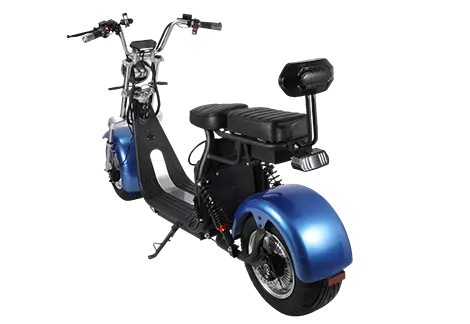The global shift towards sustainable transportation has led to a surge in the popularity of electric motorcycles and scooters. As more consumers and businesses recognize the environmental and economic benefits of these vehicles, manufacturers and exporters are keen to enter this emerging market. However, exporting electric motorcycles and scooters involves complex regulations, standards and market conditions. This article explores the basic conditions for exporting electric motorcycles and scooters, providing a comprehensive guide for manufacturers and exporters.
Understand the market
Before delving into the export scenario, it is crucial to understand the market dynamics of electric motorcycles and scooters. The demand for these vehicles is driven by several factors:
- Environmental Issues: As awareness of climate change increases, consumers are looking for environmentally friendly alternatives to traditional gasoline-powered vehicles.
- Urbanization: As cities become more congested, electric scooters and motorcycles provide convenient and efficient transportation options.
- Government Incentives: Many countries offer subsidies and tax incentives for electric vehicle purchases, further boosting demand.
- Technological Advances: Improvements in battery technology and charging infrastructure are making electric motorcycles and scooters more attractive to consumers.
Regulatory Compliance
One of the first conditions for exporting electric motorcycles and scooters is compliance with regulatory standards. Different countries have different regulations on vehicle safety, emissions and performance. Here are some key aspects to consider:
1. Safety Standards
Most countries have specific safety standards that electric motorcycles and scooters must meet. These standards typically include:
- Crash Test: Vehicles may need to be crash tested to ensure they can withstand an impact.
- Lighting and Visibility: Regulations may dictate the type and location of lights, reflectors, and other visibility features.
- BRAKE SYSTEM: Braking systems must meet specific performance standards to ensure rider safety.
2. Emission Regulations
While electric vehicles achieve zero tailpipe emissions, manufacturers must still comply with regulations regarding battery production and disposal. Some countries have strict regulations on battery recycling and disposal to minimize environmental impact.
3. Certification and Testing
Manufacturers may need to obtain certification from a recognized agency before exporting. This may involve:
- Certification: The process of proving that a vehicle meets the regulatory requirements of a specific market.
- Third Party Testing: Some countries require independent testing to verify that a vehicle meets safety and performance standards.
Import Duties and Duties
It is crucial for exporters to understand the import duties and tariffs of their target markets. These costs can significantly affect the final price of electric motorcycles and scooters, thereby affecting competitiveness. Here are some things to note:
1. Tariff rate
Different countries impose different tariff rates on imported vehicles. Researching these rates can help exporters determine pricing strategies and potential profit margins.
2. Free Trade Agreement
Some countries have free trade agreements that could reduce or eliminate tariffs on electric vehicles. Exporters should explore these agreements to take advantage of lower costs.
Market Research and Entry Strategy
Conducting thorough market research is crucial to successful exporting. Understanding consumer preferences, local competition and market trends can inform your entry strategy. Here are some steps to consider:
1. Target market analysis
Identify the countries or regions with the highest demand for electric motorcycles and scooters. Factors to consider include:
- Consumer Demographics: Understanding your target audience can help shape your marketing strategy.
- Local Competition: Analyzing competitors can provide insights on pricing, features, and marketing strategies.
2. Distribution Channels
Deciding on the right distribution channel is crucial to effectively reach consumers. Options include:
- Direct Selling: Selling directly to consumers through online platforms or physical stores.
- Partnerships: Working with local distributors or retailers can help penetrate the market more effectively.
3. Marketing Strategy
Developing a solid marketing strategy is crucial to creating brand awareness and attracting customers. consider:
- Digital Marketing: Leverage social media and online advertising to reach tech-savvy consumers.
- Local Events: Attend trade shows and local events to showcase products and interact with potential customers.
Financial considerations
Exporting electric motorcycles and scooters involves various financial considerations that can affect profitability. Here are some key aspects to assess:
1. Production Cost
Understanding production costs is critical to setting competitive prices. Factors to consider include:
- Material Cost: The price of components such as batteries and motors can fluctuate.
- LABOR COST: Depending on the manufacturing location, labor costs can vary significantly.
2. Transportation and Logistics
Shipping costs can significantly impact the overall cost of exporting. Factors to consider include:
- Shipping Method: Choosing between air and sea freight will affect delivery time and cost.
- Customs Clearance: Understanding your target market’s customs procedures can help avoid delays and additional fees.
3. Currency Fluctuation
Exporters should be aware of currency fluctuations that may affect pricing and profitability. It may be beneficial to implement currency risk reduction strategies such as forward contracts.
After-sales support and warranty
Providing after-sales support and warranty services is critical to building customer trust and loyalty. Consider the following points:
1. Warranty Policy
Offering a competitive warranty policy can increase customer confidence in your product. Make sure warranty terms comply with local regulations.
2. Service Center
Establishing a service center or establishing a partnership with a local repair shop can provide customers with convenient maintenance and repair services.
in conclusion
Exporting electric motorcycles and scooters offers significant opportunities for manufacturers and exporters in the growing global sustainable transportation market. However, navigating the complexities of regulatory compliance, market research, financial considerations, and after-sales support are critical to success. By understanding the conditions for exporting these vehicles, companies can effectively position themselves in this dynamic industry to contribute to a greener future while capitalizing on the growing demand for electric vehicle solutions.
Post time: Oct-25-2024


